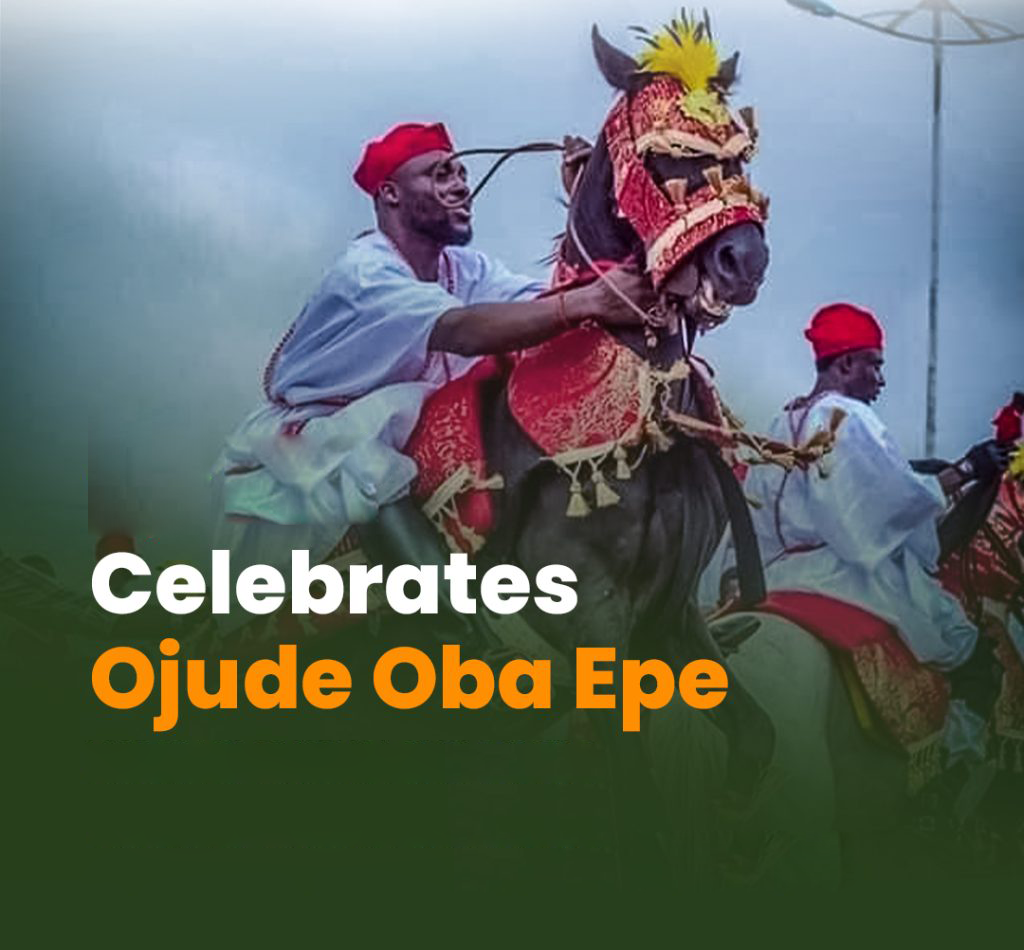Ojude-Oba Festival is a one-day celebration of culture, fashion, glamour, candour, beauty and royalty as sons and daughters of Ijebuland. The festival always commenced with prayers by the Imam of Ijebuland, then followed by the National Anthem, then the Ogun State Anthem and the Awujale Anthem, and finally the Lineage praise of the Ijebus. After all of these, the parade of different ages known as Regbe regbe with names––such as Obafuwaji, Bobagbimo, Bobakeye, Gbobaniyi and Gbobalaye begins.
This is the heart of the ceremony as each group with both male and female counterparts are distinct either in their manner of appearance and style of dressing or by their dance patterns. Some of the groups members are top managers, chief executive officers, head of industries and prominent traditional title holders. The groups each has a recognisable face, like the Gbobaniyi, a group of middle-age men, that dress in rich traditional Aso-Oke, wield walking sticks and dance like conquerors, has former Ogun State Governor Gbenga Daniel as its patron, while the female Gbobaleye are noted for gaiety and dance and has as member the popular Waka music star, Queen Salawa Abeni.
In straightforward terms, these groups files in turn by turn with their drummers to pay homage through their dance, and with presentation of gifts and offerings at the feet of the King. They pray for him, wishing him a peaceful tenure and long life.
Different horse-riding families are led by the Balogun. Descendants of Ijebu war heroes are regarded as the Balogun. Some horse-riding families includes; Balogun Odunuga, Balogun Bello Odueyungbo Kuku, Balogun Agboola Alausa, Balogun Alatishe, Balogun Otubu, Balogun Adesoye, Balogun Odejayi, Balogun Adesoye Onasanya, Balogun Towobola, Balogun Aregbesola and Balogun Ajibike Odedina. Intermittent gunshot are used to announce their entry, which sends many people into a frenzy.
One of the very reasons why people from entirely different cultural backgrounds finds the Ojude oba festival very interesting is because Art plays a very significant role in the festival. To really account for the artistic beauty of the Ojude Oba festival, take into consideration the style and manner of dressing of the different age groups, the music and musical instrument, even to the design on the horses of the Balogun families, and so on.
Age grades compete for the best dressed. Hence, the reason why group go all out for the season’s most expensive clothing. Attires from a previous festival cannot be worn again at a new Ojude Oba festival, they wear entirely different attires year to year which makes a statement on the economic status and wealth of the age group and how well they are doing. Arguably, nowhere else is the Yoruba flair for traditional attire better demonstrated than in the flamboyance at Ojude Oba. Traditionally, the favourite dress colours of the Yoruba people include; tan, the rich natural tone of the silk known as sanyan, and blue, ranging from the palest to the deepest blue black obtainable from the indigo dye pots.




Sign in to your account
